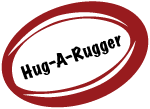Few people are prepared for promotions, and few organizations provide this type of detailed information and equipment. Something to think about at your organization.
Called Up For Your Country
Let's allow ourselves a little fanciful day-dreaming on this busy working day.
After years of selfless toil out on the rugby pitch, slogging your guts out every weekend and having nothing to show for it but a bashed-up face and heavy limp on Monday morning, the reward you always craved has come: you've been called up to play for England against Scotland on Saturday. Nice feeling, isn't it - but how does it work? Who tells you you're in, where do you go, how are you introduced to the grizzled legends already in the team? How long do you have to learn the set plays, what do you do about kit and what dreadful initiation ritual is there to go through?
With the assistance of two of England's most recent debutants, prop Dan Cole and lock Courtney Lawes, plus team kit technician Mark Povey, let's step into the inner sanctum.
The call-up
Letter? Headline on Ceefax? Tip-off from a journalist in the know?
"When it first happened I got a call on my mobile from Martin Johnson," says Lawes. "The trouble was, I didn't have his number in my phone, so I didn't actually know who it was. I wasn't quite certain it was actually him.
"He told me I'd got the nod, and that he wanted me to come into camp. It was quite simple - be at the team's training base at Pennyhill Park at this time on this day."
The first day
"The drive down to Surrey was a nervous one," says Cole, who at the start of the season was only third choice tight-head for his club side Leicester.
"I could have got a lift with one of the other boys, but I didn't want to be presumptuous. The players who don't make the matchday 22 are sent back to their clubs on the Tuesday before a match, and I didn't want to make it look like I thought I was in, and then have to catch a bus home.
"I had no idea who was who and what the schedule was. Then, in your hotel room, you find a bi g welcome pack."
g welcome pack."
Introduced by former coach Clive Woodward, the pack (see below right) - a grey cloth folder, zipped around the edge and with the player's name embroidered on the front cover - contains everything an England player needs to know. "At the front is a welcome note from Jonno," says Lawes. "There are sections on what is expected of you as an England player, a description of the team ethics, the team plays for the week and a thick section on the tactics and strengths and weaknesses of that weekend's opposition - plus what we want to do to exploit those."
Cole's folder for the Scotland match contains homework - on England's plans for the lineout, on the set moves they hope to unleash and on his opposite number.
For obvious reasons - look away now, Andy Robinson - the exact details must remain under wraps. But there are pages on attack principles ("play at tempo"), team philosophy in bullet-point form ("We will give whatever it takes", "We will compete at every lineout") and explanations of team calls on the pitch.
An example? Should you hear Jonny Wilkinson scream, "KC!" at Murrayfield, a kick-chase will shortly follow.
"It's simple, but it helps reinforce the work we've done on the training pitch," says Cole, whose own book contains images of bulldogs with motivational slogans written underneath, courtesy of assistant coach Graham Rowntree. "Every decent team will have something similar, but each has a specific way of wording it."
There's advice on what to say to the media ("Basically, don't slag off your team-mates," deadpans Cole) and what kit you should wear at what session or function. Which, as we're about to see, is rather more important than you might think.
The kit
"Each player gets a phenomenal heap of stuff," says Povey, and he's not exaggerating.
If you were called into the elite squad for the Six Nations, the following would be delivered to your house before your first training session:
• A match-day jersey, embroidered with the fixture date and opposition details, plus a second one to be changed into at half-time
• Two pairs of match-day shorts
• Two pairs of match-day socks
• Two training shirts
• Two pairs of draw-pants (waterproof tracksuit bottoms)
• Two England t-shirts
• Four pairs of training socks
• Media-day polo shirts in white and purple
• One presentation top for the team line-up at the match (the purple tracksuit tops worn for the national anthem)
• Matching presentation pants
• Two pairs of padded pants (tracksuit bottoms) for contact training sessions
• Two compression tops, one long-sleeve and one short
• Two pairs of compression tights, one long, one short
• Compression socks
• An official bespoke team lounge suit
• Two formal shirts, two official England ties, cufflinks, belt and formal shoes
• A bespoke dinner jacket and trousers, plus bow tie
• Four England kit-bags - a large holdall, wheelie-bags large and small and a day-sack.
"The players' names are embroidered on all their kit," says Povey "not inside the collar, as if they're in PE at school, but initialled on the front of the kit.
"The only thing they need to worry about is bringing their own boots, as they have their own individual sponsorship deals."
When Johnson announces his matchday 22 on Tuesday, the details are sent to the kit warehouse in Basingstoke, where a woman named Annie has exactly 24 hours to embroider the 44 shirts and shorts and 88 socks with names and numbers.
Players keep this match kit. Everything else is placed in a personalised laundry bag. There is no need to worry about washing your kit. Povey takes care of it all.
"Twenty two years in the Army taught me a lot about attention to detail," he says laconically. "I've got my own underwear colour-coded."
The initiation
The stuff of fearful legend at amateur rugby clubs, the induction rites for a rugby new-boy are seldom pleasant. While England debutants are spared the regurgitated beverages and pint-pot horrors of t he lower leagues, they are still forced to prove themselves to their new team-mates.
he lower leagues, they are still forced to prove themselves to their new team-mates.
"You have to sing to the entire team," says Cole (see right, with England cap). "You do it on the coach after your first full cap. I don't like speaking in public, let alone singing, so I wasn't looking forward to it. I just searched my iPod for something that had short verses, a chorus that was easy to learn and ended pretty quickly."
His choice? "Stand By Me."
"I was lucky," says Cole. "Matt Mullan had to go first, and for some reason he chose 'Build Me Up Buttercup'. You get booed from the start anyway, but he got hammered. Everyone was shouting "No buttercup" at him as loud as they could. By the time it came to me, everyone was booed out. I just got told to get off."
Lawes is still waiting for his own moment, but has something special planned should he get the nod. "I'll do the theme tune from The Fresh Prince. I heard the rap when I was younger, so I can fall back on that."
The day of the match
Off the team coach, into the dressing-room. "Each player has a designated changing area," says Lawes. "Above your pegs is a sign on the wall with your name written in large letters."
Then, before kick-off, the final touch.
"You're given an actual cap by Martin Johnson to mark your first appearance," says Cole. "It's red velvet, with gold laces. It's smart. If you get 50 caps you get another one, in silver, and if you reach a hundred it's a gold one."
Finally, the call comes from the referee, and the players march into the tunnel. You're good to go.








No comments:
Post a Comment